The best air beds for camping
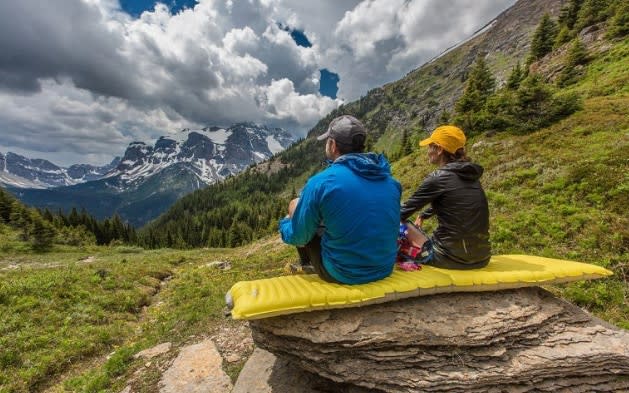
Looking for the very best air bed for a sound night's sleep while on the hoof?
We tried a range of lightweight air beds for backpacking overnight, and considered them in terms of various criteria, including:
Ease and speed of inflation
Comfort
Weight
Pack-ability (i.e. the ease with which they fit into your camping rucksack)
Durability (which included checking that none of the mats were susceptible to pesky air leaks
Insulation (the 'R-value' is the measure for a material's ability to resist heat transfer at a certain thickness. The higher the R-value, the greater the insulating power.)
Below, we've picked our top three, starting with the very best of the lot. So, lie back and read on (or, if you're actually in search of a larger, bouncier air bed for home sleep-overs, check out our guide to the best larger air beds for bedding down in the front room)...
Our favourite: Therm-a-Rest NeoAir X Lite Max SV
Why we like it: this supportive air bed inflates quicker than the rest

Of all the camping beds I tested, the NeoAir X Lite Max SV came out on top.
On paper, it performs well. The bed weighs just 460g – that's far better than the entry-level products in the market (for example the Vango Trek Standardt, £24.99, Winfields Outdoors), which tend to weigh closer to 1kg. And with an R-Value of 3.2, it's suitable for a use in a wide range of temperatures – from 16C down to -40C. Largely, this is thanks to its “Thermacapture” insulation technology, essentially a heat reflective coating that preserves the heat otherwise lost back to your body, without adding excess weight or bulk to the product.
So that's a big tick for the spec. Pleasingly, the NeoAir proves to be just as good during actual usage – and it makes an impression from the start. Top-of-the-range air beds and mattresses take around three to five minutes to inflate with the breath, and they often leave you out of puff and feeling not a little dizzy. In comparison, the NeoAir takes a third of the time. According to my stopwatch, it goes from flat to full in 60 seconds, which is pretty sharp.
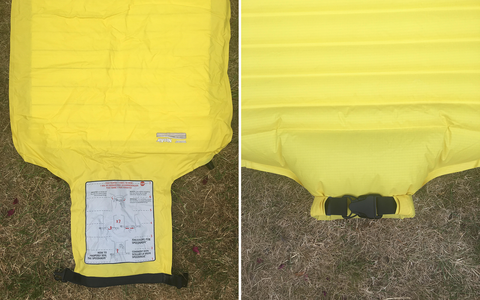
A clever little bit of design is behind this rapidity. You have to inflate the NeoAir through lung power – but as you puff, with your mouth a few centimetres away from the opening (counter-intuitive, I know), the wide opening of the valve pulls in surrounding air to amplify your breath. I only had to take 20 breaths – others tested required more like 40-55 gulps of air. Then, to seal it, you fold it seven times along the lines and buckle it up so it feels secure and airtight.
The process is just as quick in reverse. To deflate the mat, you unbuckle the valve and roll the mattress up to press the air out – a process that takes about 30 seconds. Once deflated, the bed packs down easily and fits neatly into a bag.
If you don't trust the sound of this hocus-pocus valve, you can still buy the Therm-a-Rest NeoAir X Lite regular, which has a standard valve (£144.99, Ellis Brigham). But honestly, we'd go with the newer version.
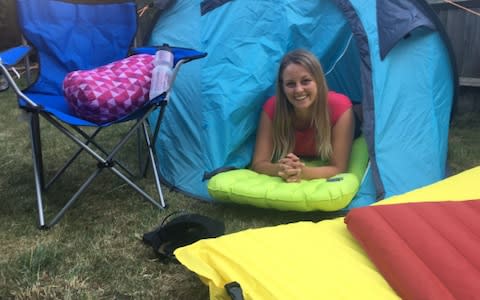
Right, time to talk comfort. The NeoAir performs brilliantly here too: I found that it moulded to my body – which you'd expect from an airbed – without collapsing me into the floor. The degree of squish is spot on, so you feel supported and also a bit bouncy. Texture-wise, it feels almost paper-like, but I slept soundly and in the morning I had none of the dull aches that you might associate with a night on the floor.
The product I tested measured 183cm by 51cm, which seems tall and slim. There's a large version, which measures 196cm by 63cm, though that weights slightly more at 706g (£219.99, ultralightoutdoorgear.co.uk). If you can, go with the smaller one. The bright marigold yellow hue makes it stand out, but it's also available in a more muted grey.
Therm-a-Rest is an Irish brand that’s been around since the early Seventies and it’s well-known for quality. This air bed comes with a limited lifetime warranty, which means it’s covered for life against defects in materials and workmanship.
It certainly seems like a sturdy bit of kit: the seams appear strong and the material resilient. However, since it’s light and thin, I would be inclined to be careful near jagged rocks and stones, and pets. It shouldn’t go in the washing machine, but it can be scrubbed and cleaned with a hose or in a tub.
For committed adventurers: Big Agnes Insulated Q-Core SLX Petite
Why we like it: this is the very lightest (and best insulated) air pad we tried
£119.99, worldbackpacker.co.uk

I refer ounce-counting explorers to the the Big Agnes Insulated Q-Core SLX, the lightest, most compact camping air bed I tried. Designed for the intrepid, it weighs just 437g, measures 168cm by 50cm, and packs down far smaller than other pads, to the size of a large water bottle (see picture below). Those dimensions are short and narrow respectively, so consider your body shape before buying this one (you can also buy the mat in wide, long, wide regular and wide long variations – though all are naturally a bit heavier.)
Despite being the lightest, Big Agnes is also the warmest – with an impressive R-Value of 5. We tried the three-season option with synthetic insulation (suitable for -9 degrees celcius up to 2 degrees celcius), but you can also buy a version designed specifically for warm weather (above 2 degrees celcius) or cold weather (below -9 degrees celcius). It comes with a 2-year warranty.
Like the NeoAir, the Big Agnes uses heat reflective technology to retain body heat otherwise lost. And it benefits from antimicrobial treatment, which prevents microorganism growth (good to know).
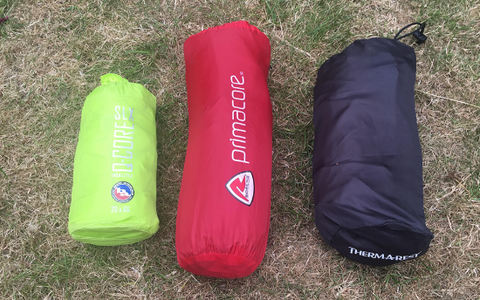
The Q-Core took me five minutes to inflate, which largely explains why I've chosen the NeoAir as the best on the market. However, once inflated, this is a seriously good piece of kit. The valve has a button to let out a little bit of air at a time. A second valve is dedicated to deflation, which feels comforting – to my eye, there's less chance of leakage if one valve is dealing with the inflow and another with the outflow.
Comfort-wise, the sleeping surface is padded with square, indented, quilt-like air pockets, which means the sleeping surface of the mat is pleasant to lie on. The mat's 'beam construction’ (lightweight structuring that resists loads applied laterally to the axis) supports the body by ensuring the pad is firm, while larger chambers of air around the outer of the pad left me happily ensconced in the middle of it.
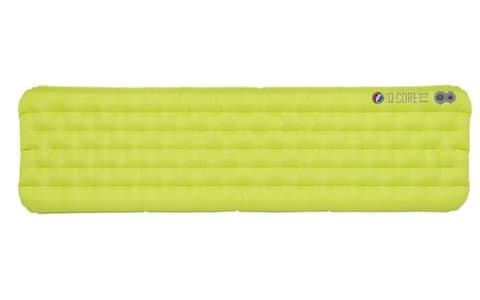
The Q-Core also wins points for its smell. That may sound like an odd thing to say, but camping air beds are generally made of plastic, which means they pong when you take them out of the wrapping – a bit off-putting, when you think that you're going to be inhaling that smell all night long. The Q-Core's polyamide material is less pungent than the other products we tested.
For a good night's sleep: Robens Primacore 90 Airbed
Why we like it: this is the most comfortable air pad we tried
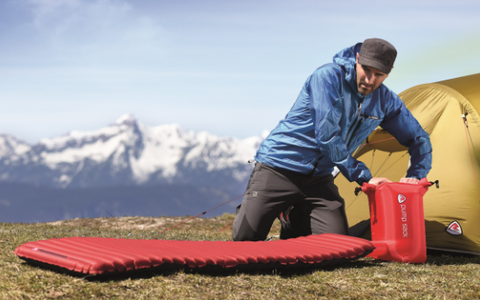
I also rated the Robens Prima Core 90 Air bed. At 780g, it's the heaviest of the three products highlighted here – but what you lose in lightness, you gain in comfort. This is easily the most comfortable of the lot. It features a horizontal ribbed design, which helps it to adapt nicely to the shape of your body. At full inflation, the support is very firm – my preference – but it's easy to let out a bit of pressure if you want something more squishy. I found the bed kept me warm, though at 2.1, it has the lowest R-Value of the products in my top three.
As with all these air beds, I would also recommend investing in a travel pillow or an inflatable pillow. If you're used to sleeping with a pillow (I bet you are), it's quite uncomfortable to spend a night without one.
I liked the feel of the 100pc nylon fabric, which is less ‘plasticky’ on the skin than other options, and the artificial smell isn't too pervasive. To touch, the Primacore90 feels like it isn't likely to tear; apparently, it’s laminated for extra durability, though it does comes with a repair patch in case of a puncture, so it's not indestructible.
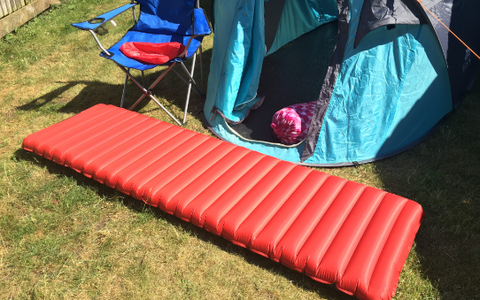
It took me six minutes to inflate with my breath, so it's slower than the first two products; Robens recommend using their Robens Pump Sack for even easier, quicker inflation (the added benefit of this is that it doesn’t introduce humidity – although personally I'd rather not add to the weight of my backpack). My main criticism here is that some air kept escaping as I frantically attempted to seal the valve. Plus, the valve can't have been completely airtight, because the next morning, the bed required a bit of extra puff to keep it firm.
Overall, I'd say this is a good festival air bed: it's comfy, durable, and I like the jazzy red hue. It makes me want to camp out in the garden in my pop-up tent, even when I’m at home.
Robens is part of Oase Outdoors, the Danish parent company of camping brands including Outwell and Easy Camp. It operates under European law in terms of warranty conditions; offering two years limited warranty on manufacturing faults.
Best of the rest
We also liked the Vango Trek Standard self-inflating sleeping mat, a value option recommended by both the Duke of Edinburgh Award and the Scout Association (£24.99, Winfields Outdoors), but at 940g, it was slightly too heavy to make the cut for us.
Meanwhile, I'm awaiting the launch of the Alpkit Cloud Base (available to pre-order for £45, alpkit.com), a new lightweight inflatable camping mat weighing 395 grams and criss-crossed with diamond shaped air chambers. It will be interesting to know where the compromises are in this product, at that price level.
And finally, a hat tip goes to the SnugPak Elite XL self-inflating mat with a built-in pillow (£74.95, snugpak.com), which solves that problem about your lolling head. It's roomy and comfortable and the 'blow and lock' valve system is great, but at 1700g, it's too bulky and heavy to carry for long periods of time.


 Yahoo News
Yahoo News 
